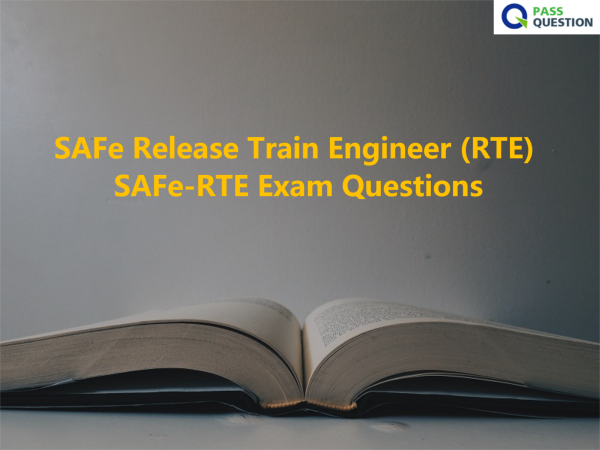SAFe Release Train Engineer (RTE) SAFe-RTE Exam Questions
How to ace your Release Train Engineer (RTE) Exam with SAFe-RTE Exam Questions? One of the best ways to prepare for the RTE certification exam is by taking SAFe Release Train Engineer (RTE) SAFe-RTE Exam Questions. The SAFe Release Train Engineer (RTE) SAFe-RTE Exam Questions provide an opportunity to assess your knowledge and identify areas where you need to focus your study efforts. By identifying your strengths and weaknesses, you can tailor your study plan to maximize your chances of success. With the right approach and preparation, you can increase your chances of passing the certification exam and advancing in your career as a Release Train Engineer.

Certified SAFe Release Train Engineer (RTE)
Release Train Engineer (RTE) is part of the trio of leaders that includes product managers and system architects. This plays a critical role in leading Agile Release Trains (ARTs) to deliver value. This means that the RTE must create the right environment, have the right conversations, facilitate the right meetings, and gather the right people to make decisions based on the right data.
Exam Information
Duration: 120 minutes
Number of questions: 60
Passing score: 45/60 (75%)
Competency level: Advanced difficulty; Expert, fully competent; can perform tasks with little assistance
Question format: Multiple choice (one answer) or multiple select (2-3 answers)
Delivery: Web-based, closed book, no outside assistance, timed
Languages offered: English
Exam Sections and Percentages
Exploring the RTE role and responsibilities (17%)
Applying SAFe Principles (7%)
Organizing the ART (7%)
Planning a PI (20%)
Executing a PI (27%)
Fostering relentless improvement (8%)
Serving the ART (10%)
Continuing your learning journey (5%)
Share Certified SAFe Release Train Engineer (RTE) SAFe-RTE Free Questions
1.Who are two key collaborators with the RTE to support the ART? (Choose two)
A. Release Management
B. System Architects/Engineers
C. Product Owners
D. Scrum Masters
E. Product Management
Answer: B,E
2.What are two common PI Planning anti-patterns? (Choose two.)
A. Stories are created for the Iterations
B. The team decides which changes need to happen and when
C. Too much time is spent analyzing each Story
D. Scrum Masters who work with multiple teams do not have time for their teams
E. Too much time is spent prioritizing Features
Answer: C,D
3.Release Train Engineers have the opportunity to regularly practice and improve which two skills? (Choose two.)
A. Servant leadership
B. Facilitation
C. Test-driven development
D. Return on investment projections
E. Continuous Integration
Answer: A,B
4.During the management review and problem-solving meeting, one team raises the risk of not finishing a Feature before the end of the Program Increment (PI).
How can the man-agement team help ensure they complete the Feature within the PI?
A. Use buffer resources as a guard band
B. Redefine the definition of done for Features
C. ROAM the risk appropriately
D. Negotiate a reduction in scope of the Feature
Answer: D
5.When should a Product Owner (PO) develop preliminary Iteration Goals?
A. After PI Planning
B. During PI Planning
C. Prior to iteration planning
D. During backlog refinement
Answer: C
6.What is one way to develop sufficient Architectural Runway for the Agile Release Train?
A. Ask the teams to commit only to Enablers as their Program Increment (PI) Objec-tives during the PI Planning event and address Features as uncommitted objec-tives for the first PI
B. Create alignment with the System Architect and Product Management that the first Program Increment (PI) is all about Enablers in order to plan for creating business value in the second PI
C. Ask the Business Owner which Enablers have high business value
D. Work with Product Management and System Architects to identify future Features and determine the Enablers to achieve them
Answer: D
- TOP 50 Exam Questions
-
Exam
All copyrights reserved 2025 PassQuestion NETWORK CO.,LIMITED. All Rights Reserved.

